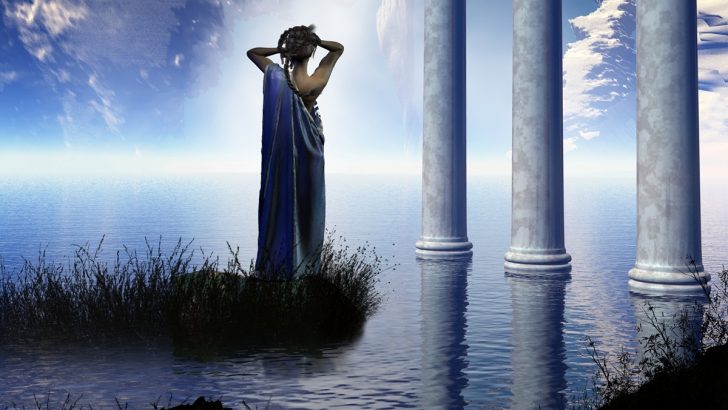Love has always fascinated humans across cultures and time periods. Ancient civilizations created powerful deities who controlled matters of the heart, desire, and beauty.
These gods and goddesses weren’t just romantic figures – they often wielded tremendous influence over fertility, marriage, and even war.
Let’s explore ten of the most fascinating love deities from different mythological traditions around the world.
1. Aphrodite: The Sea-Born Beauty
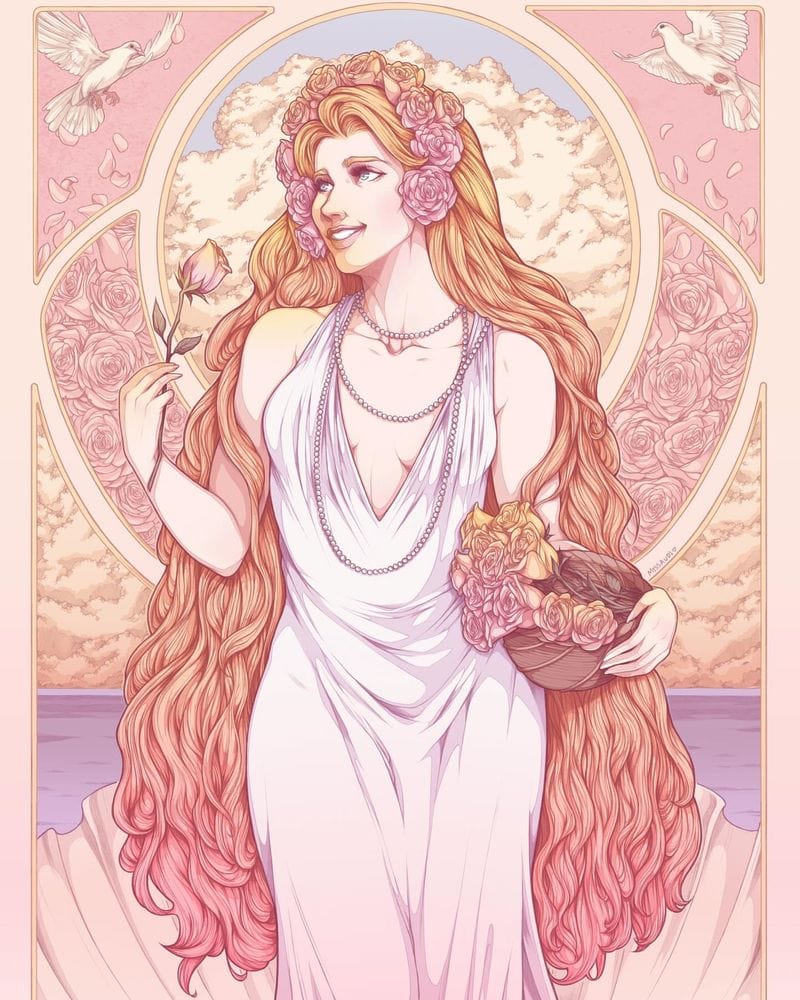
Born from sea foam after Cronus cast his father’s severed parts into the ocean, Aphrodite emerged as the embodiment of beauty and desire in Greek mythology. Her very name means ‘foam-born,’ reflecting her dramatic origin story.
Despite being married to Hephaestus, the blacksmith god, Aphrodite’s passionate affairs—especially with Ares, the war god—became legendary. She wielded enormous influence over both mortals and gods, capable of inflaming uncontrollable passion with a mere glance.
Ancient Greeks built numerous temples dedicated to her worship, with the island of Cyprus claiming special connection as her birthplace. Her symbols included doves, sparrows, roses, and myrtles—all representing different aspects of love and desire.
2. Venus: Rome’s Golden Goddess
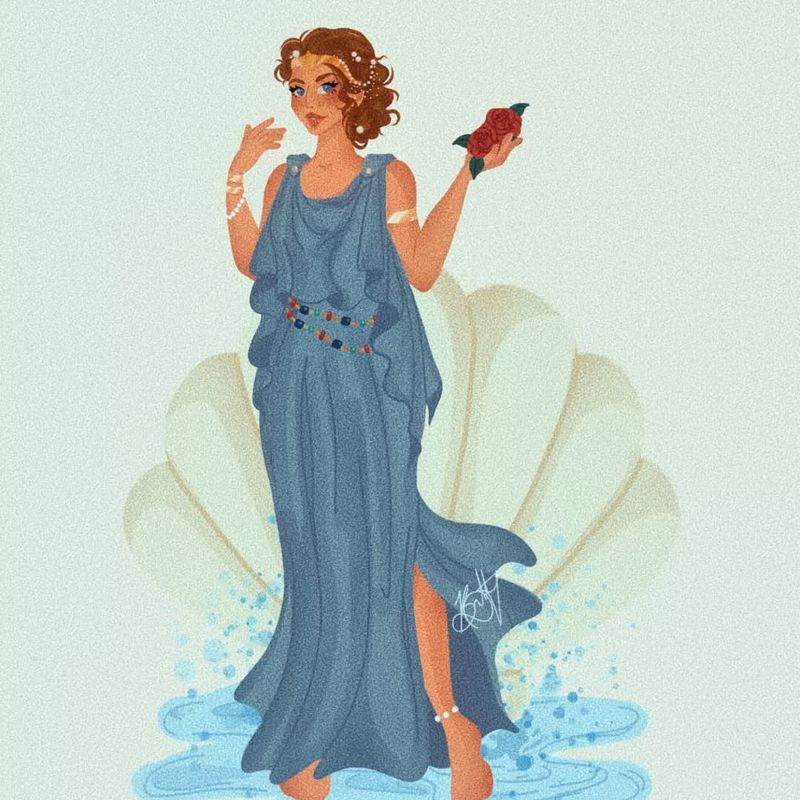
Adopted from the Greeks but transformed into something uniquely Roman, Venus represented not just love but also victory and good fortune. Unlike her Greek counterpart Aphrodite, Venus held strong connections to Roman political power and imperial destiny.
Julius Caesar claimed direct descent from Venus through his ancestor Aeneas, making her the divine mother of the Julian clan. This clever political move elevated his family’s status to semi-divine.
Venus Genetrix (‘Venus the Mother’) became an official state goddess, with temples built throughout the empire. Artists portrayed her with idealized beauty—perfectly proportioned and often adorned with gold. Her sacred animals included doves and swans, while her chariot was famously pulled by sparrows.
3. Eros: The Mischievous Archer
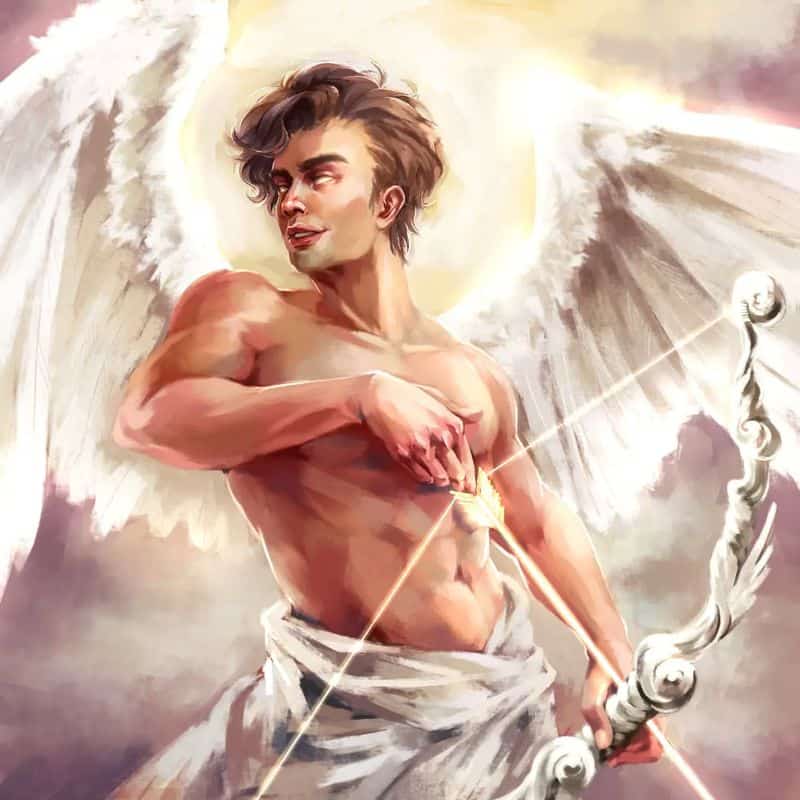
Originally portrayed as a primordial deity in early Greek mythology, Eros later transformed into the playful winged youth we recognize today. Armed with his magical bow and two types of arrows—golden ones that sparked love and leaden ones that repelled it—he delighted in causing romantic chaos.
Many myths feature Eros shooting unsuspecting victims, causing them to fall madly in love with the next person they saw. His most famous story involves his own romance with the mortal princess Psyche, which nearly ended in tragedy before the couple earned their happy ending.
The Romans renamed him Cupid but kept his mischievous nature intact. Today, his image as a cherubic baby with wings appears everywhere around Valentine’s Day, though ancient Greeks would hardly recognize this infantilized version.
4. Freyja: The Magical Norse Enchantress
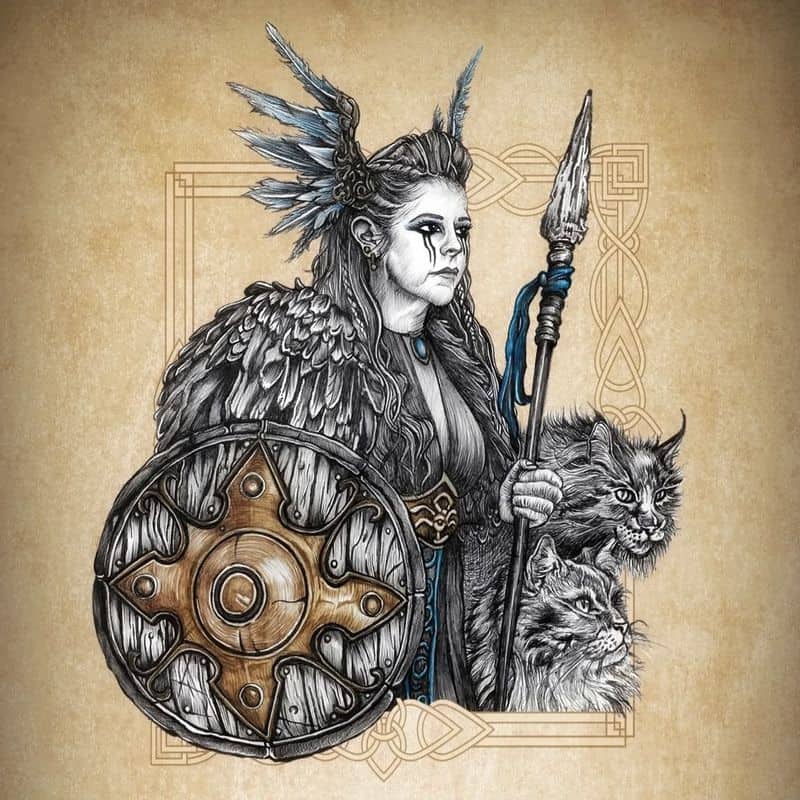
Riding through the Norse heavens in a chariot pulled by cats, Freyja commanded attention as the most powerful goddess in Asgard. Half the warriors who died in battle went to her hall Fólkvangr, while the other half joined Odin in Valhalla—showing her equal status with the All-Father himself.
Freyja possessed the magical necklace Brísingamen, which she obtained through clever negotiation with four dwarven craftsmen. Her beauty was legendary, but so was her fierce independence and magical prowess as the foremost practitioner of seiðr magic.
Unlike many love goddesses, Freyja wasn’t merely decorative—she taught magic to Odin, traveled between worlds, and commanded respect from giants and gods alike. Her tears turned to gold when she searched for her missing husband, creating another connection to wealth and prosperity.
5. Kamadeva: The Desire-Awakener
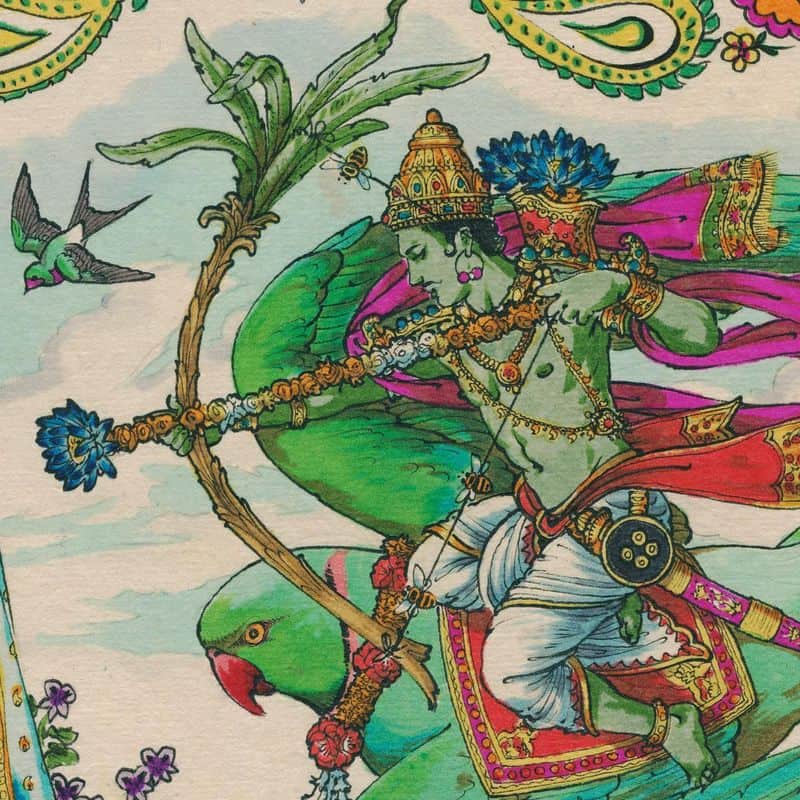
Sporting a bow made of sugarcane with a string of honeybees and flower-tipped arrows, Kamadeva creates romantic longing in Hindu mythology. His companion Rati (pleasure) accompanies him on a parrot mount, while spring flowers bloom wherever they travel.
Kamadeva’s most famous story ended in tragedy when Lord Shiva incinerated him with a glance from his third eye. The love god had interrupted Shiva’s meditation with an arrow of desire, hoping to make him fall for Parvati. Though reduced to ash, Kamadeva later returned in non-physical form after Parvati’s plea.
Hindu texts describe him as exceptionally beautiful, carrying a banner with a makara (sea monster) emblem. His festival Holi celebrates his sacrifice and the triumph of love over asceticism, featuring colored powders representing spring’s arrival and passion’s awakening.
6. Oshun: The River’s Golden Heart
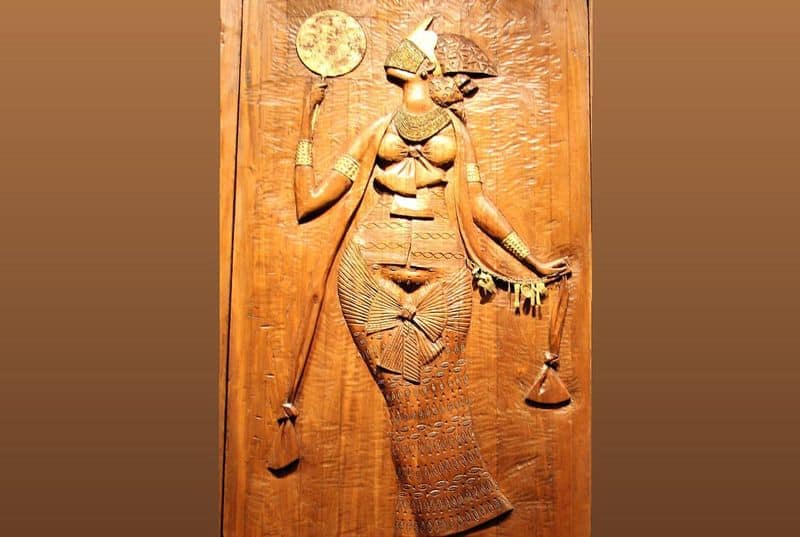
Draped in yellow and gold, Oshun dances along riverbanks in Yoruba tradition, embodying fresh water’s life-giving properties. As an orisha (deity), she controls not just love but also abundance, fertility, and healing waters that sustain communities.
Her favorite offerings include honey, sunflowers, pumpkins, and brass jewelry—all reflecting her golden essence. When humans faced drought in primordial times, Oshun transformed into a peacock and flew to the heavens, convincing the supreme creator Olodumare to send rain.
Followers across West Africa and the diaspora recognize her by her five brass bracelets and her mirror, symbolizing self-love and beauty. Unlike some love deities, Oshun represents both sensuality and motherly nurturing—a goddess who heals broken hearts while blessing new unions with children and prosperity.
7. Xochiquetzal: The Flower Feather
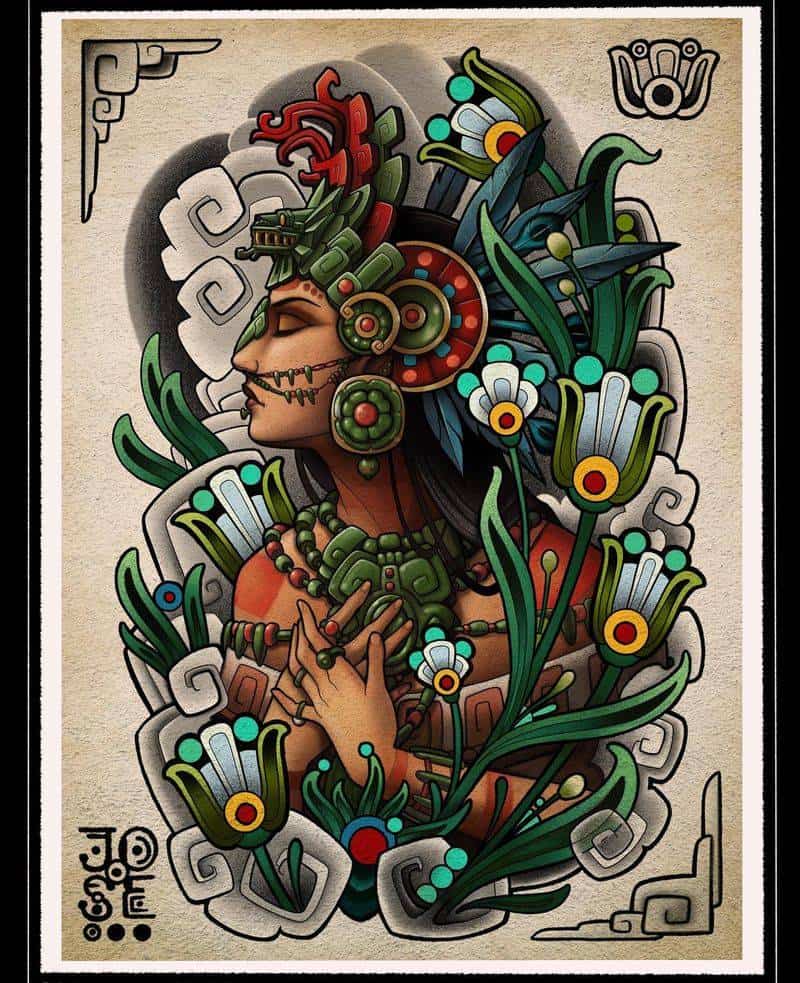
Adorned with quetzal feathers and flowering plants, Xochiquetzal brought artistry and passion to the Aztec pantheon. Her name combines ‘xochitl’ (flower) and ‘quetzalli’ (precious feather), reflecting her domain over beauty, creativity, and fertility.
Unlike stern deities demanding human sacrifice, Xochiquetzal represented life’s pleasures—weaving, embroidery, dancing, and lovemaking. Young women prayed to her before marriage, while artisans sought her inspiration for crafts and poetry.
Aztec myths tell how she was originally a fertility goddess who resided in Tamoanchan (paradise) before being kidnapped by Tezcatlipoca, the smoking mirror god. Despite this trauma, she maintained her joyful spirit, becoming the patron of pregnant women and young mothers while teaching humans the arts of pleasure and creativity.
8. Hathor: Egypt’s Cosmic Cow
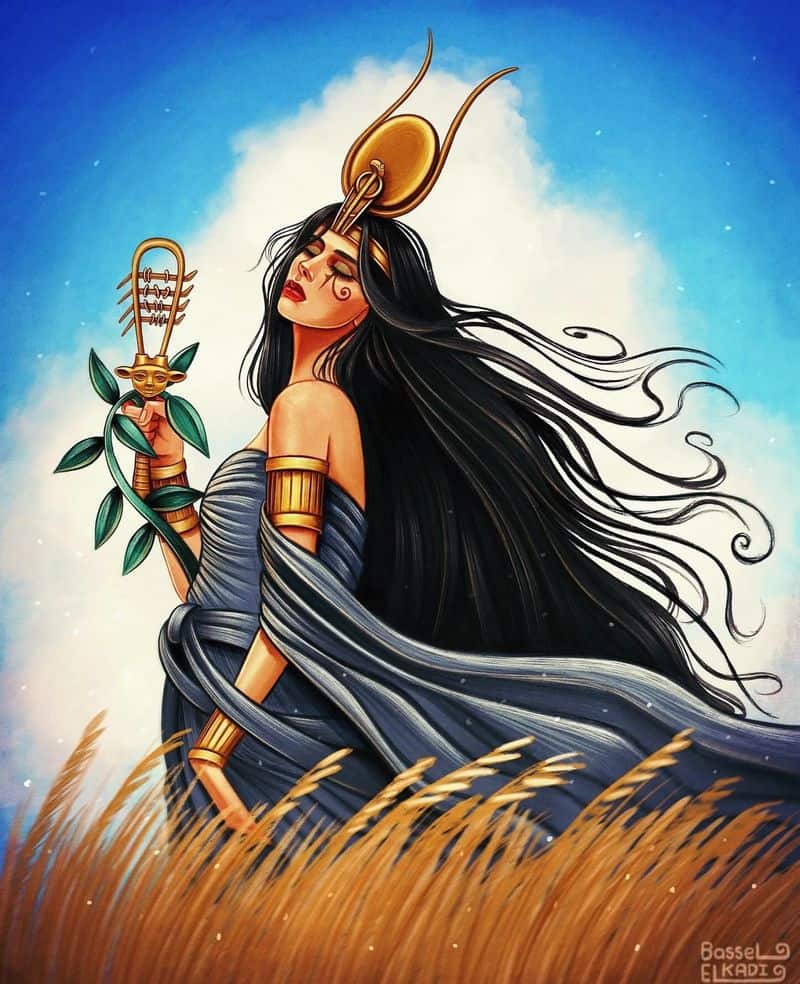
Crowned with cow horns cradling a solar disk, Hathor embodied motherly love and joyful music in ancient Egypt. Her name means ‘House of Horus,’ connecting her to the falcon-headed sky god as both mother and consort in different traditions.
Pharaohs claimed divine legitimacy through Hathor, calling themselves her sons and seeking her protection. Her priestesses used sacred rattles called sistra during ceremonies, believing the instrument’s sound drove away evil forces while invoking Hathor’s nurturing presence.
Beyond romance, Hathor welcomed souls to the afterlife, offering her sacred sycamore tree’s fruit to nourish the deceased. Her temple at Dendera featured columns topped with her four-faced image, allowing her to see in all directions simultaneously—watching over worshippers while keeping eternal vigilance against chaos.
9. Yue Lao: The Moonlight Matchmaker
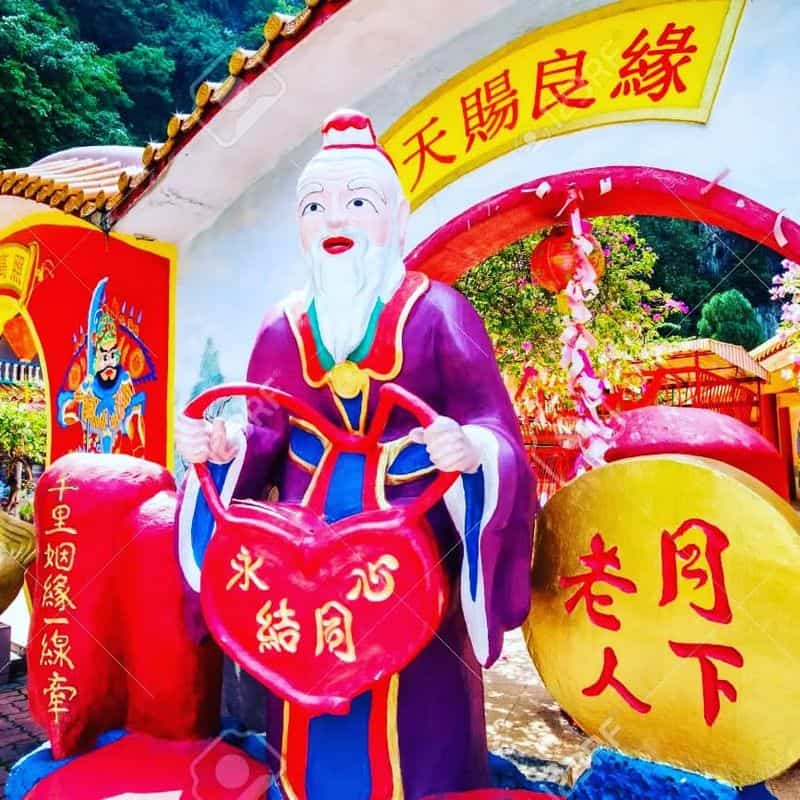
Carrying a book of marriages and a length of red thread, Yue Lao wanders beneath moonlight in Chinese folklore as the celestial matchmaker. Unlike younger love deities, he appears as an elderly man with flowing white beard and traditional scholar’s robes, representing wisdom in matters of the heart.
His most famous power involves the invisible red thread connecting destined lovers—no matter how far apart they live or what obstacles separate them. One story tells of a young man who encountered Yue Lao and mockingly asked about his future wife. The god showed him a poor merchant’s three-year-old daughter, which the man attempted to prevent by ordering a servant to stab the child.
Years later, the man married a beautiful woman with a decorative scar—the same girl he had tried to eliminate, proving Yue Lao’s threads cannot be severed by human intervention.
10. Inanna: Mesopotamia’s Queen of Heaven
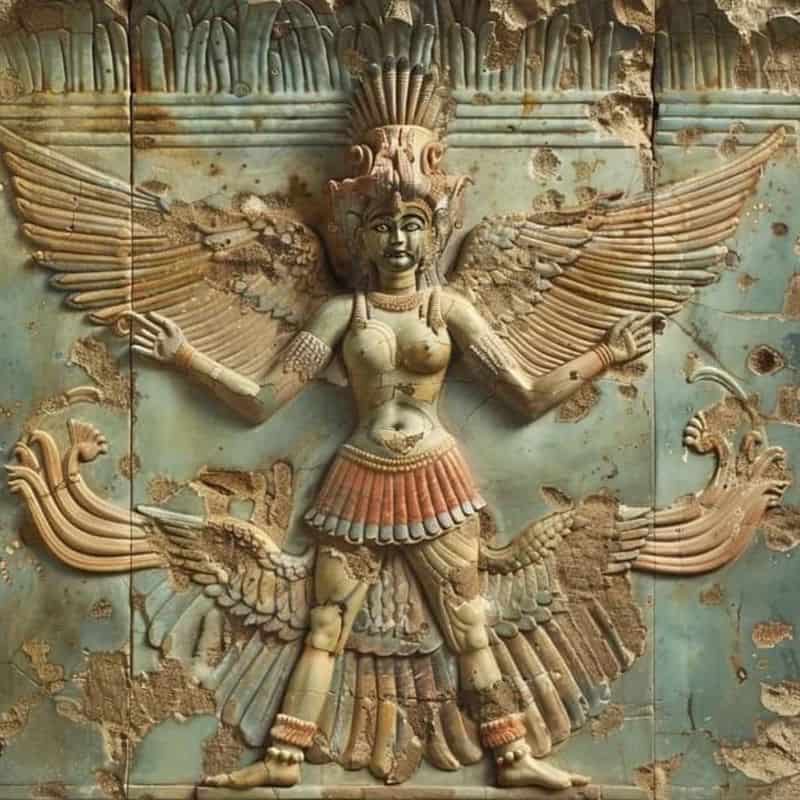
Striding through ancient Sumer with her lion companion, Inanna commanded respect as both love goddess and fearsome warrior. Her eight-pointed star symbol represented her dual nature—tender in romance but merciless in battle, making her perhaps history’s most complex love deity.
Inanna’s famous descent to the underworld to challenge her sister Ereshkigal resulted in her death and resurrection, creating one of the world’s earliest resurrection myths. At each of seven gates, she surrendered a piece of clothing or jewelry, arriving naked and powerless before being restored through clever negotiation.
Temples to Inanna featured sacred prostitution, where worshippers engaged in ritual sex representing the goddess’s union with her shepherd lover Dumuzi. Later civilizations adopted her as Ishtar (Babylonian) and Astarte (Phoenician), spreading her cult throughout the ancient Near East.

